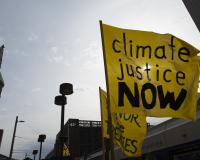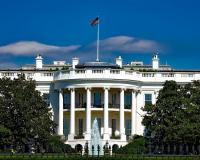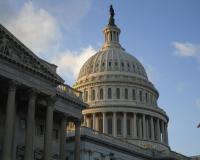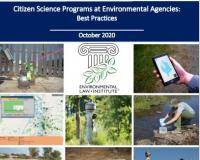
Vibrant Environment
Governance And Rule Of Law
All | Biodiversity | Climate Change and Sustainability | Environmental Justice | Governance and Rule of Law | Land Use and Natural Resources | Oceans and Coasts | Pollution Control

Part One of this blog examined various U.S. whistleblower laws that could be applied to international fisheries crime. Part Two will continue a discussion of the Lacey Act, perhaps the most powerful whistleblower reward law addressing illegal trade in fish, wildlife, and plants. The Lacey Act makes it unlawful for any person subject to U.S. jurisdiction to import, export, transport, sell, or purchase fish, wildlife, or plants in violation of any U.S. or foreign law, including the Convention on International Trade in Endangered Species of Wild Fauna and Flora.

Despite advances in environmental law in recent decades, issues with implementation and enforcement continue to impede environmental progress worldwide. This is especially true in the case of illegal, unreported, and unregulated (IUU) fishing. Because IUU fishing is nomadic and international, detecting and penalizing perpetrators can be difficult, if not impossible. Organized, transnational groups are increasingly turning to illegal fishing, whether to produce income, fund their networks, or conceal trafficking of drugs and people on their ships. Government—such as through customs or ports—likewise plays a large role in facilitating and concealing these illegal activities.

The agricultural industry is developing fast. With new and emerging technologies on the rise, industrial agriculture continually strives to incorporate sustainability and efficiency into its operations. Although the industry produces significant pollutants, including animal waste, chemical fertilizers, pesticides, and other agricultural inputs and byproducts, incorporating new technologies, such as drones, helps to mitigate the hazardous pollutants associated with industrial agriculture. In addition to mitigating environmental harm, incorporating sustainable technology into agricultural practices can improve water conservation and bolster efficiency.

Per- and polyfluoroalkyl substances, a class of toxic synthetic chemicals collectively known as PFAS, are all around us—in the environment and in our bodies. According to the Agency for Toxic Substances and Disease Registry, most people in the United States have PFAS in their blood. Scientific studies have shown that exposure to these “forever chemicals” can lead to a variety of adverse health effects, including increased cholesterol, pregnancy complications, and kidney and testicular cancers; recent studies also suggest that PFAS may reduce resistance to infectious diseases such as COVID-19 and may reduce antibody responses to vaccines.

Despite the existing tension between trade pacts and global environmental rule of law, environmental side agreements (ESAs) of bilateral and multilateral trade pacts have created a unique mechanism for environmental enforcement: citizen submissions. These submissions provide a mechanism for ordinary citizens to formally and publicly bring attention to potential environmental harms in their communities, including the non-enforcement of environmental laws.

Let me begin this blog by stating that I support the Joe Biden Administration’s effort to address environmental injustices in this nation. I just wish that it had taken a legislative-focused path to help bring about profound changes in the lives of tens of millions of Black and Brown and poor people.

On August 5, 2015, EPA personnel assigned to mitigate pollutants from the foreclosed Gold King Mine in Colorado caused the discharge of toxic wastewater into the Animas River watershed, releasing lead, arsenic, and other metals and toxic elements. Even though Colorado Governor Hickenlooper eventually declared the area a disaster zone, the delayed response and devastating environmental impacts from the Gold King Mine wastewater spill revealed an urgent need to address the nearly 500,000 Abandoned Mine Lands throughout the United States. According to the EPA, the total cost to clean up AMLs ranges from $50-70 billion. Although the burden of mitigating toxic pollutants from AMLs may appear to rest solely upon the federal government, the Comprehensive Environmental Response, Compensation, and Liability Act (CERCLA) mandates that the party responsible for AML hazardous contamination must assume financial responsibility.

An incoming administration stocked with veterans of prior government service is uniquely suited to appreciate the central role of administrative law in American governance. But the day-one actions of the Biden Administration put an exclamation point on this observation.

President Donald Trump’s policies appear to be at odds with the environmental justice (EJ) movement, but little work has been done to test their true impact. Trump proposed or completed rollbacks of nearly 100 environmental regulations, repeatedly rejected calls for action on climate change, and continuously sought to cut funding for the U.S. Environmental Protection Agency, including for environmental justice. These regressive policies seem likely to harm poor and minority communities most, especially following what many saw as promising progress under President Barack Obama. But how are these policy changes actually impacting the cause of EJ? How can we assess actual progress toward EJ’s multifaceted goals?

Environmental agencies are increasingly transforming their approach to citizen science, from viewing it as a source of data primarily for education and awareness to a potential source of concrete value for their programs. Although this relationship has existed for some time, the emergence of new technologies, an increasingly aware public, and the rise of unexpected pollution events has reinvigorated the way agencies and the public work together.